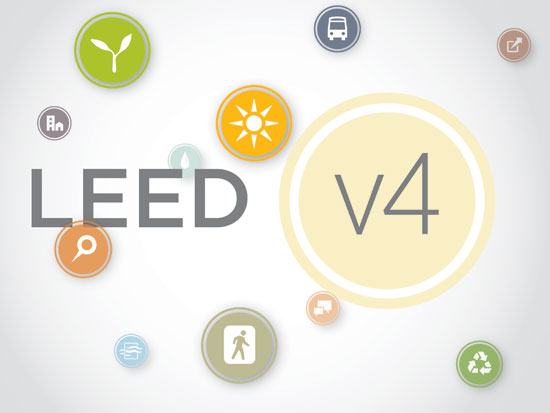Multi-Attribute Certification Pinpoints True Sustainability
Cradle to Cradle and LEED v4
 |
|
Photo courtesy of USGBC |
In the current (LEED 2009) and previous versions of the U.S. Green Building Council's (USGBC) LEED rating system, Cradle to Cradle was not specifically included as a path to compliance in the Materials and Resource section. However, a Credit Interpretation Ruling in 2007 determined that projects can earn an Innovation in Design credit if 2.5 percent of the building's materials are Cradle to Cradle Certified, by cost. Now, LEED v4 will include Cradle to Cradle as a component in its Materials and Resources category. LEED v4 was approved by the USGBC membership in July 2013 and will be rolled-out at Greenbuild in November 2013.
Substantially reworked, the Materials & Resources section of LEED v4 is different from LEED 2009 in that it applies life-cycle thinking at the whole-building and product level. Proposed credits reward projects for reusing as much material as possible and optimizing design to use less material overall. LEED 2009 credits were based on single attributes of materials, such as recycled content. This approach only tells part of the story; a product could have higher than average performance on that one attribute, but far lower than average performance on others. The LEED v4 approach paints a more complete picture of materials and products, enabling project teams to make more informed decisions that will have greater overall benefit for the environment, human health, and communities.
The main credit that addresses Cradle to Cradle in LEED v4 of New Construction is Materials and Resources Credit 4, Building Disclosure and Optimization—Material Ingredients. This credit, which is worth up to 2 points, encourages the use of products for which the chemical ingredients are inventoried using an accepted methodology and for selecting products verified to minimize the use and generation of harmful substances.
Cradle to Cradle Certified is specifically listed as a path to compliance in Options 1 and 2 of the credit and maybe eligible for Option 3 as the credit language further develops.
Option 1, Materials Ingredient Reporting, rewards project teams for selecting products for which the chemical ingredients in the product are inventoried using an accepted methodology. Understanding a products chemical composition down to the 100 ppm is a necessary first step in working towards chemical optimization. Surprisingly, many manufacturers—due to complicated supply chain issues—are not fully aware of all of the chemicals in their products. This credit will provide encouragement for manufacturers to engage in the process. Option1 awards a point to projects for using at least 20 permanently installed products that meet at least one of a list of criteria. One of these criteria is Cradle to Cradle. The product must be certified “Cradle to Cradle V2 Basic level or higher or Cradle to Cradle v3 Bronze level or higher” to be eligible. All currently certified products will contribute to the credit. This recognizes the rigor required by Certified manufacturers in completing the Bill of Materials and chemical inventory that is the basis for the material health assessment.
Option 2, Material Ingredient Optimization goes beyond knowledge of ingredients and rewards project teams for selecting products verified to minimize the use and generation of harmful substances. This point encourages use of products that have been assessed and optimized for their chemical composition. To achieve the credit, the project must use products comprising at least 25 percent of the total cost of permanently installed products; products must be accounted for by cost. Cradle to Cradle v3 Silver certified products are valued at 100 percent of cost, recognizing that it does not contain Cradle to Cradle banned list chemicals and does not contain chemicals that are considered carcinogens, mutagens, or reproductive toxins. Cradle to Cradle v2 and v3 Gold and Platinum are valued at 150 percent of their costs recognizing that the product has been fully optimized from a chemical perspective.
While Cradle to Cradle Certified is a multi-attribute assessment, these credits focus on the material health aspect of the program. For that reason, LEED will accept products that have achieved the material health scores as outlined above but may have an overall lower certification. For example, when looking at a certification scorecard, if the Material Health score is Gold but the Renewable Energy score is Bronze, the overall product would be rated Bronze. However, based on the Material Health score, the product would be eligible to contribute to both points outlined above and would be valued at 150 percent of cost in option 2.









